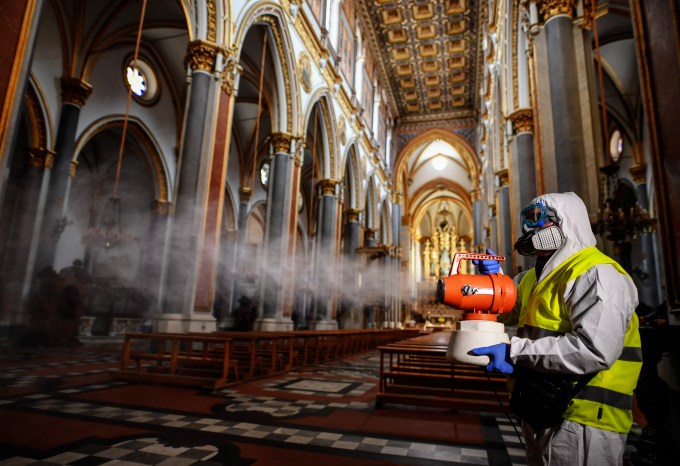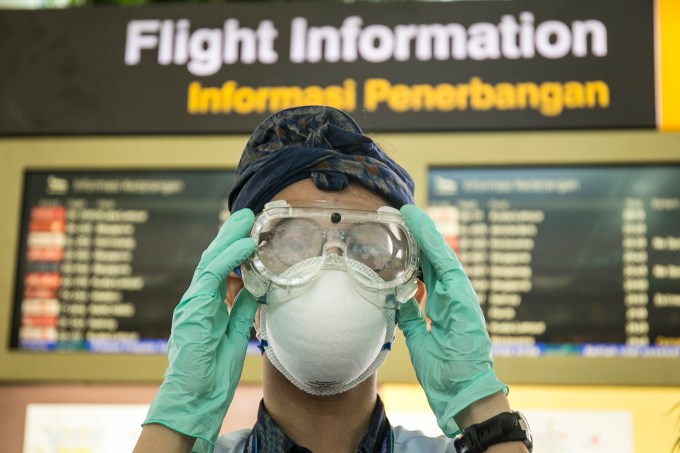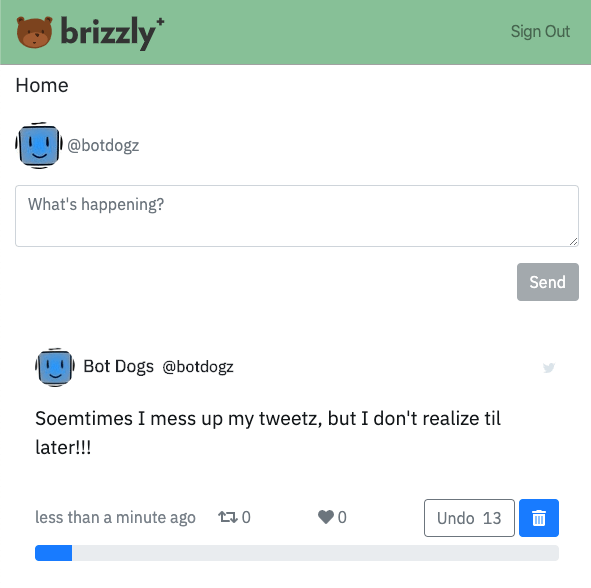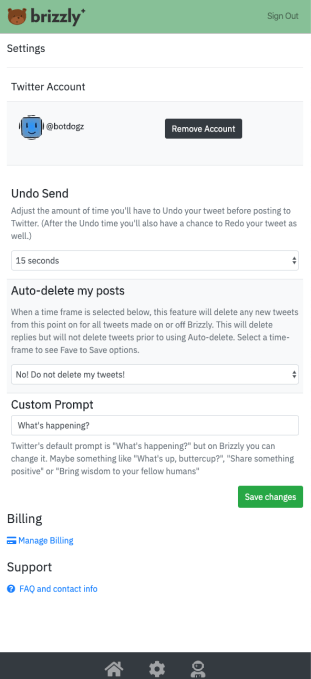There’s just been a torrent of economic news since the first identification of patients with COVID-19 in Wuhan, China in early December 2019 until the declaration of a global pandemic by the World Health Organization (WHO) yesterday. Investors have fled the public market, more and more companies are teetering on the abyss, and surprisingly, some companies and even entire markets are doing better than ever.
Given the insane levels of news and raw data flowing through us the past few weeks, we wanted to take a step back to look over what’s happened the past three months, picking through the most important stories that have been coming out of the markets.
We get paid to watch this stuff and we’re buried. So let us dig all of us out at once. We’ll look at a few different key areas, including global public markets, the sharp decline in the value of cryptocurrencies, what’s going on with recent and future IPOs, SaaS as a category, and the shelacking that airlines have received.
Major global markets have crashed (except one!), but at different levels and at different times
Nowhere has the red ink been flowing faster than on the major market indices. Just today, the Dow Jones Industrial Average crashed to the lowest level in more than a decade, and the index officially entered bear market territory earlier this week for the first time in 11 years.
But rewind to the beginning of December. The Dow was sitting at just above 28,000 heading into the holiday season, and the Nasdaq was at 8,672.84. There were concerns that the limited holiday season between Thanksgiving and Christmas (it was 6 days shorter thanks to where Thanksgiving landed) might impact America’s annual binge on shopping. But the retail and spending data ended up being spectacular, with 2019 likely the strongest holiday shopping season in American history.
Despite early coverage of the coronavirus in December and heightened global awareness in January, investors continued engorging themselves on equities throughout early winter. While the WHO declared the coronavirus a “public health emergency of international concern” at the end of January, the Dow actually hit its 52-week high two weeks later on February 12, closing that day at 29,551.42, or about a 5% increase from early December. Meanwhile, Nasdaq actually hit its 52-week high a week later on February 19th, closing at 9,817.18, up 13% from early December.
Those market highs were just 22 days ago.
Since then, the U.S. public markets have cratered. The Nasdaq has lost more than 24% of its value in just three short weeks, while the Dow has lost more than 26%. Circuit breakers have been tripped more than once, forcing the markets to close for a few minutes to give breathing room for investors. And the red ink looks poised to continue to wash over equities as more coronavirus cases are identified across the U.S. and globally.
That’s the view from the American stock markets, but the timings are quite a bit different across the world.
China, which was the original epicenter of the outbreak and faced its health consequences first, has seen massive gyrations in its markets as investors learned the scope and scale of the pandemic. The Shanghai Composite showed growth throughout December, rising more than 8% and peaking in mid-January at 3,115.57, just before the start of the massive Lunar New Year holiday, which began January 25.

Photo by Kiszon Pascal via Getty Images
China’s stock markets were closed for a week due to the holiday, and so no trading took place from January 23 to February 3. In that time of course, the WHO declared a public health emergency, and the full scale of the coming pandemic was starting to be realized by public market investors. When the markets re-opened, the Shanghai Composite lost 10% of its value, and closed on February 3 at 2,746.61.
Here’s the crazy part though — that drop hasn’t been repeated. In fact, the index reached a recent high of 3,071.68 on March 5, and has hovered in the 2,900 range for the past few weeks, despite the massive collapse in international equities. That’s still down from the index’s peak in early 2019, when a massive bull run pushed the index up by about a third from December 2018 to April 2019, only to see a massive crash by May. But investors in China seem equanimous about the country’s future economic growth and ability to weather the aftershocks of the pandemic.
A similar story emerges from South Korea, although without the same intense peaks and troughs. The country’s KOSPI index has barely budged in the past three months, down just under 3% from where it was in early December. The real hit though has been sustained on Japan’s Nikkei 225 index, which had been mostly flat from December to mid-February, only to crash hard over the span of just a few days. From a close of 23,479.15 on February 20, the index has lost 21% of its value to today.

Photo by Salvatore Laporta/KONTROLAB/LightRocket via Getty Images
Finally, we head to Europe, where again, the markets were mostly fine through much of this early period but have since crashed in tandem with the U.S. markets as the scale of the outbreak in Italy — now the EU’s third-largest economy since the UK left in Brexit — has become more fully known. The London-based FTSE 100 index has lost more than 30% of its value from a recent high of 7,651.40 on January 20 to around 5,300 today (trading is still open as we write this article). Like Nasdaq, the continental Euronext 100 index peaked on February 19, but has only lost a bit more than 10% since then, showing some surprising resiliency given the headlines emanating from Italy and elsewhere in the Eurozone.
So while global markets are all being slammed by investors, the intensities of their decline and their timings are in fact wildly different. The New York and London markets have been hit hard, while European markets seem to have some safety. And in Asia, the results are decidedly mixed, with China recovering, Korea staying flat, and Japan dropping like a rock. So while there is a lot of red ink to go around, it’s not flowing evenly to all corners of the globe.
Cryptocurrencies aren’t the digital gold refuge we thought they were
With the massive gyrations in the public markets, it’s perhaps not surprising that assets considered “safe” have seen massive interest from investors. U.S. treasury yields have declined to record lows, indicating that investors are willing to pay more for less returns in what are generally seen as safety assets. Meanwhile, gold has seen a surge of interest, rising more than 10% since early December.
So then, what the hell happened with cryptocurrencies?
According to CoinDesk’s Bitcoin Price Index, the price of BTC has cratered since a high mid-February of around $10,300 to today’s price at sub-$8,000, a nearly 25% decline. Ethereum’s ETH has seen an even more intense decline in the same period of 32%, and EXP has declined by almost 40%.
Digital gold, these are not.
Far from being a refuge from the turbulence of the public markets, cryptocurrencies seem to be crashing over the past few weeks at almost the exact same velocity as the major U.S. stock exchanges.
There has long been an open question of exactly what cryptocurrencies are, from a computing utility to a store of value to a form of “digital gold” that would be a bulwark against inflation and government intervention in the economy. It’s too early to declare that last narrative entirely dead on just three weeks of data, but the prices all but show that crypto isn’t exactly the safety asset you want in a massive global recession.
Recent IPOs decline, future IPOs delay
During the 2019 IPO cycle, a number of venture-backed companies debuted and performed well, including cybersecurity-focused CrowdStrike and, compared to its final private pricing, high-flying productivity company Slack. More recently, 2020’s slim IPO class of two companies has produced a big success as well, with One Medicals’s stock soaring after a conservative pricing cycle.
Not all news was good. Even before the recent selloff, there were a number of troubled offerings. SmileDirectClub’s debut was the stuff of nightmares, and both Uber and Lyft priced poorly only to lose more ground in initial trading.
However, 2019 was a generally good year for IPOs. The IPO-tracking Renaissance IPO ETF (exchange traded fund) rose nearly 30% in the period. That figure, coupled to the sheer dollar value of companies that debuted (Uber certainly helped there, but other large offerings like Pinterest mattered as well), led to the year’s IPO haul growing a smidgen over 2018’s result, with $65.4 billion raised by US-listed IPOs in the year according to Factset.
Even as 2019 was coming to a close, there was room for continued optimism. Bill.com proved to be an explosive IPO while Sprout Social managed a perfectly fine debut. Those results, coupled to the rising values at Uber and Lyft made the IPO market look pretty enticing.
One Medical’s incredibly strong reception in early 2020 cemented how open the IPO window was until very recently. Indeed, the One Medical debut came in early January. And over the next few weeks — the time period leading up to the recent selloff — DoorDash and Asana filed, followed by Procore and Accolade.
Then everything began to move in reverse. Uber and Lyft, after posting improving financials and boosting profit forecasts, entered into a steep selloff. Slack, which had recovered from recent lows in February, fell 15% in the downturn. Pinterest, another 2019 IPO that sold down some from its debut and rebounded in February, has also returned its gains, and more, in the recent selloff.
Meanwhile, Casper and SmileDirectClub, 2019 and 2018 D2C IPOs respectively, are so far down from their initial market prices that they now look like outright mistakes and not just slight mispricings by the two companies’ bankers. Casper has lost two-thirds of its market value, while SmileDirectClub has lost 75% since its market high. Apparently no one is smiling or getting a good night’s rest with the market the way it is these days.
So from a position of relative strength, the 2019 IPO window melted into an early 2020 cycle that looked strong. Companies were starting to line up to be the next out the gate. And, then, when the selloff came it tackled a number of recent debuts, crashing valuations and kneecapping revenue multiples.
The IPOs we know about appear to be on hold, and the IPOs we expected (Airbnb, among others), are probably set back materially.
But not all lumps taken are the same size, and there has long been a category of startup, tech company, and venture-backed entity that soared above the rest. That is until recently, when it was the first into correction and the first into a bear market. Let’s talk about SaaS.
SaaS sheds shine as shares slip
Software as a service, better known as SaaS, has become the predominant way that software companies sell their wares today. Selling a discrete piece of software is now effectively an obsolete method of distribution. Services make revenue for vendors more regular, and can align incentives between users and developers.
Whether you like SaaS or not as a user, tech companies and investors alike are smitten. Indeed, we’ve seen enterprise deals (a proxy of sorts for SaaS) overtake consumer deals at the Seed stage, and some VCs like Shasta have gone all-in on SaaS.
The public market has picked up the private market’s SaaS shine, bidding up shares of companies in the sector in recent years. This has led to a few results, including rising revenue multiples (how SaaS businesses are usually valued, instead of earnings multiples), some strong IPOs (see above), and rising startup valuations.
SaaS stocks have had their dips before. There was a judder in 2016, some bumps in 2018, and so forth. But nothing like what we’ve seen the past three months. SaaS stocks, as tracked by the Bessemer-Nasdaq index, neared correction territory (a 10% decline from recent highs) on March 6th. That was just a few weeks after setting all-time highs on February 19th (the same day that Nasdaq reached its peak as well). After more declines on March 9, SaaS stocks entered bear market territory (a 20% decline from highs).
For SaaS, long a market leader, to see its shares fall so much, so quickly, was an inversion of the norm. And likely a surprise.
SaaS and cloud stocks are still trading at over 10x times their trailing revenue (when compared to their enterprise value), but that number is shrinking as optimism fades. If SaaS and cloud companies dip under the 10x mark it will be a new, and unwelcome era for the category (or for the pessimists, a return to normalcy). That’s a world that could also see private investor optimism fade as the exit potential for SaaS startups diminishes.
SaaS companies are still very valuable. And the best-in-class from the cohort are still richly valued. But SaaS has certainly given back some of its shine in this new market reality.
Except for one major company: Zoom. The video conferencing software has seen a huge rally on the public markets, rising nearly 50% over the past three months (and 77% since its IPO last year) as investors expect more and more users to work from home and therefore use video-conferencing technology. The company’s market cap has now soared to over $30 billion, a massive return, particularly for employees and investors who didn’t sell after the company’s lockup.
Global airlines — and Boeing — are looking at very hard times

Photo by Johanes Christo/NurPhoto via Getty Images
Finally, we have to talk about one industry that is just getting clobbered by coronavirus and that is tourism, and particularly the airline industry. With travel bans being announced by President Trump and tourists and business travelers avoiding international travel, few industries have been as massively hit as the travel sector.
Europe’s budget airline Norwegian Air has seen a nearly complete destruction of its market cap, declining in value 80% since the beginning of December 2019. Norwegian runs a variety of long-haul international budget routes, which are going to be massively impacted by the increasing number of travel restrictions being put in place by governments to quarantine the virus.
Meanwhile in the same period, Delta Airlines has lost about a quarter of its share price, which is significantly better than its U.S. competitor American Airlines, which has lost about 44% of its value, and United, which has seen a nearly 56% drop in its price. Smaller domestic airlines like Alaska and Southwest seem to be weathering the storm a bit better (both have more limited international flights than the legacy flag carriers), with drops of “only” 33% and and 21%, respectively.
Hotel chains are seeing roughly similar declines, with Marriott down 33% and Hilton down 23% since the beginning of December. And of course, one of the most anticipated IPOs of the year — Airbnb — was most likely delayed amidst declines in international travel and broader global macro challenges.
Yet, there is one more massive stock that has just been wallopped, and that is Boeing . The airframe manufacturer has seen a 55% decline in its shares since December amidst canceled orders (and probably far more cancellations to come), and continued delays in bringing its much-maligned 737 MAX aircraft back into service. The company is down nearly two-thirds from its peak in late February 2019, and given the cash crunch, has tapped into the remainder of a $13.8 billion loan that it raised in February.
What does the future hold for the travel industry? While we can scry on what’s coming up a bit, there remains huge ambiguity around how quickly coronavirus will be contained, and of course, how quickly customers will hop back on flights and start traveling again given the lingering fears that are sure to persist. While some brave young travelers are running through the travel gauntlet today thanks to record low ticket prices, the reality is that the industry is running on literally fumes, and the debt load for many of these companies was already at unsustainable levels even before this crisis. Expect many challenges here in the months ahead.





 Check them out
Check them out 


